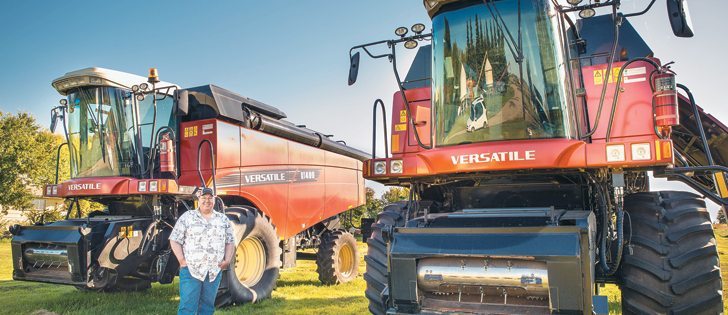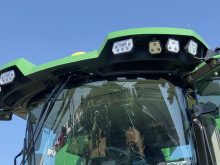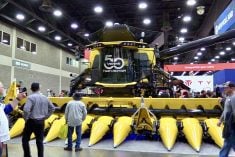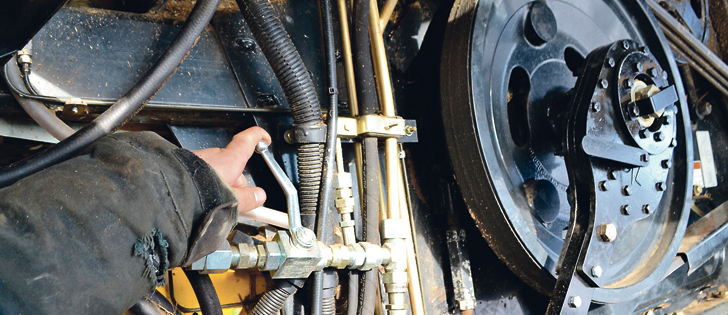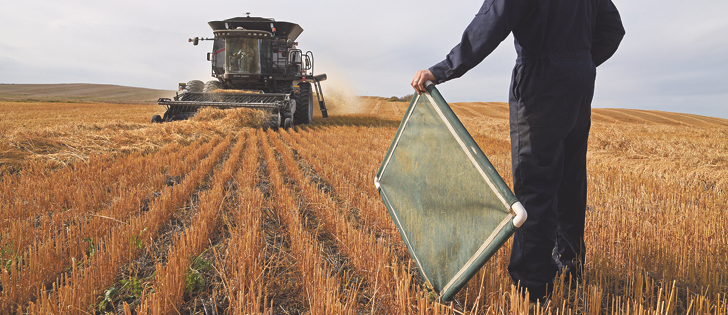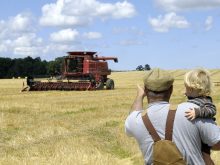None of the electronics on the Versatile RT490 are essential to operation so if something breaks down, harvest can continue
Kevin Horner was looking for reliable simplicity when he bought two new Versatile RT490 combines for his 3,000 acre farm north of Saskatoon.
Horner describes himself as one of those producers who feel the digital invasion of farm implements has gone too far.
As a result, he was willing to put his money where his mouth was, to the tune of $329,000 a combine.
“You sit in some new combines and you feel you need a degree in electronics to run the thing,” Horner said.
Read Also

Crop quality looks good this year across Prairies
Crop quality looks real good this year, with the exception of durum.
His background is actually in electronics, which perhaps makes him suspicious of putting computers in any large, rumbling, dusty machine.
“When I went down to Winnipeg three years ago to look at them, I was impressed by the simplicity and ease of maintenance,” he said of the Versatile combines.
“You open two side panels and you can get at everything.”
He was impressed that the headers are Mac Don, the drive is Claas, the engine is Cummins, and the hoses and hydraulics are from Italy.
“But they were still in the testing stage and they weren’t for sale yet,” he said. “The one I saw was their show demo, so I told them I wanted to buy the first two RT490s they had for sale. That’s how I have three harvests on them.”
Horner said he always buys two combines because it’s good to have a spare on hand in the event of a breakdown and all the dealership mechanics are busy working for the farmers who buy 10 combines at a time.
He and his wife run the farm with no outside help, so two combines help them get the crop in quicker and harvest a better grade.
Horner said he’s had no mechanical problems after nearly 5,000 acres on each combine, which means there’s been little reason to open the side panels other than for greasing and checking things.
The electronics are simple and are used to monitor basic functions such as cylinder speed, concave settings, hours and gallons of fuel per hour.
Except for the Cummins engine control unit, none of the electronics are essential to the operation of the combine, he added.
“If something happens to your electronics, you continue combining,” he said.
“It doesn’t bring you to a halt. The combines don’t monitor moisture, but that’s just another whistle and bell item. A good operator knows when it’s dry and when it’s tough.”
He said the combines have grain loss monitors, but farmers still have to check behind the combine.
“And they don’t monitor yield, which I think is kind of a useless thing anyway. All that matters is what you get into the bin, right? And there’s GPS autosteer,” he said.
He said the Versatile RT490 has an aggressive threshing system but doesn’t damage the seed.
“We hardly ever get splits in canola,” he said.
“And when we combine wheat, white caps are almost non-existent. Our dockage is .6 percent.”
Horner thinks he gets so few white caps because the 360 degree counter rotating concave consists of three sections, which creates three pinch points instead of the single pinch point normally found in a rotary combine.
Three pinch points divides the work more uniformly so the load moves through smoothly, he added.
Horner also attributes the overall performance to the fact that the typical feeder chain is replaced by a system of four beater drums feeding directly up into the rotor.
The first steel drum receives the swath right off the header, and the other three then spin progressively faster as the swath rushes up into the rotor.
“With a chain, when you get a lump, it stays because the chain grabs the whole thing and pulls it up and throws it into the rotor,” he said.
“But these beaters keep the swath very even and flat so you don’t get those lumps.”
Horner’s area is notorious for rainy wet harvest conditions that push threshing systems and drive lines to the limits. RT490s are available with an optional rear drive, but his land is flat so he decided to stay with the standard drive.
“Damp conditions is where these things really shine,” he said.
“There’s no doubt this is a Class 9 plus combine. When we get those tough crops, that’s when they seem to run smoother and cleaner. The counter rotating concave rolls out the straw and just keeps the material flowing. I end up running .2 or .3 m.p.h. faster at night than I do during the daytime.”
For more information, contact Kevin Horner at 306-226-4311.
Contact ron.lyseng@producer.com


